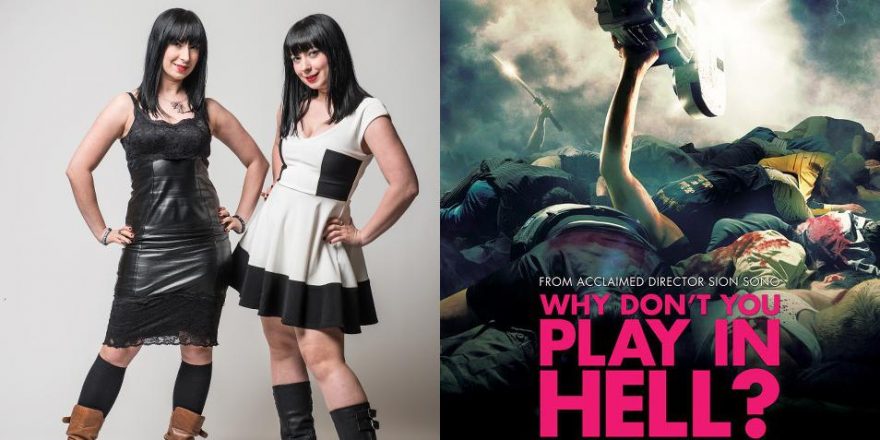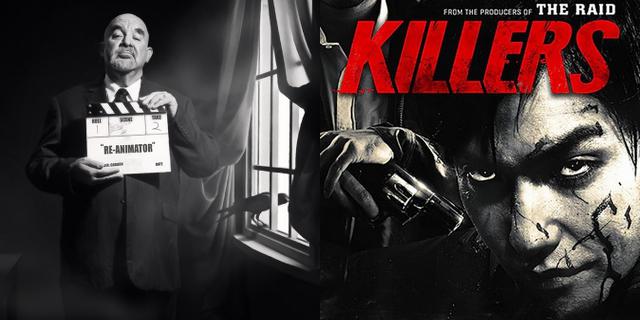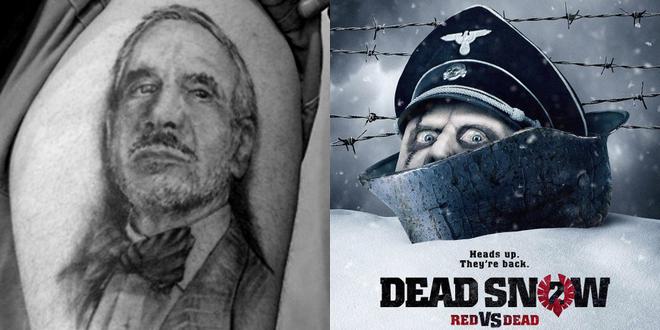Jellyfish Eyes, the first film by Japanese artist Takashi Murakami, tries to combine live action with animation. It has lots of bells and whistles but little to no genuine emotion. Compared to Hollywood films, the special effects here aren’t that fluid. It wants to appeal to children and adults, but I fear it will only appeal to Japanese children who watch it on small screens, not in theaters. Adults will be bored. I sure was, waiting for this movie to end.
I would call Jellyfish Eyes a well made but paper-thin “imitation film.” The story centers on a young boy who has lost his father and is moving into a new town, like the hero in The Karate Kid. Suddenly, and rather abruptly, he meets his “F.R.I.E.N.D.”, a small CGI Pokemon-type character that flies around like the Great Gazoo in The Flinstones. You can instantly see the main story influence here, which is E.T., the Extra-Terrestrial, and the plot of Jellyfish Eyes plays out in a manner similar to this and such others films as The Iron Giant. What is specific to the concept of this film is that all the kids have their own F.R.I.E.N.D. characters and make them battle each other, like Hugh Jackman with his robots in Real Steel (based on the fascinating short story Steel by Richard Matheson). The problem is that in The Iron Giant you care about the characters. In Jellyfish Eyes, you don’t.
The acronym “F.R.I.E.N.D.” (which is short for “life-Form, Resonance, Inner Energy, Negative Emotion, Disaster prevention”) comes from an unconvincing explanation of how the fantasy characters are made from some strange energy source somewhere. That’s literally the best description I can give you. The rules of this film were frighteningly unapparent and conceived in a lackluster, contrived way. A fantasy or science fiction film, in my opinion, must lay out the rules of its particular world. Jellyfish Eyes fails to do this, and as a result becomes annoying.
It seems clear that, with Jellyfish Eyes, Murakami wanted to create a movie featuring a fight ring in which children pitted CGI fantasy creatures against one another. When you write a script in that way, most of the time you end up with a series of events that are weakly recycled from other films. That’s what happened here in spades. Wreck-It Ralph comes to mind as a good high-concept kids film, but of course that had a team of Disney writers who went to a war room and hashed out a thoroughly developed script that had been prodded and poked for holes and flaws. You can do this work yourself, but it’s extremely difficult to sustain an objective point of view of what you are writing.
The bad guys in the film are a group of young people dressed in black cloaks – pretty much the kind of villains you see in a Power Rangers film. They want to destroy civilization and rebuild it as some kind of nefarious dystopia – a common motivation used when creating an evil character. (You’d be surprised sometimes by how difficult it is to justify why a character is evil!) This group is responsible for the F.R.I.E.N.D.s’ existence and even give the children remote controls. And, of course, when a giant Star Wars/Cthulhu-type monster appears towards at the end, the kids use their critters to combat it.
I know that the sensibilities of audiences, respective to region, differ from Tromaville, U.S.A.The Cthulu/Star Wars thing is not the only character that feels derivative. The female lead’s F.R.I.E.N.D. is a spitting image of the lovable beast from Hayao Miyazaki’s My Neighbor Totoro. And speaking of that film, Troma introduced Miyazaki and Totoro to the American public, until we got bulldozed by Disney. But anyway, in Totoro you see the rules and boundaries set up within good storytelling. Miyazaki gains his inspiration from real life. Here you have a man who creates the deepest fantasies, but ones that stem from things that we can all relate to. My Neighbor Totoro is always touching and entertaining. Jellyfish Eyes is much too long and has too little emotional substance, and as a result is only sporadically touching and entertaining.
For the majority of Jellyfish Eyes, I thought I was watching something for an audience of about eight to thirty-five years old. However, by the end, I’d decided it was an actual children’s film, albeit one that is just a little more violent than its American counterpart would be. I don’t claim to be an expert in Japanese cinema, although I did make two films with Japanese producers – The Toxic Avenger Part II was partly filmed in Tokyo – but I know that the sensibilities of audiences, respective to region, differ from Tromaville, U.S.A.
Sadly, the hits against Jellyfish Eyes keep on coming, because the main character, Masashi (Takuto Sueoka), seemed like he was trying to act rather than losing himself in the time and space of the story, which hurt the film. Also, the love story arc between the two kiddies felt thrown in. If you are interested in a children’s romance that will make you weep, seek out Forbidden Games by René Clément. The Jellyfish team should have watched Clément’s film or others of that ilk before writing their script.
I feel a bit bad writing this, because Jellyfish Eyes does have its strengths. The majority of the actors – like the little girl who plays the boy’s love interest, Himeka Asami, and the kids playing the bullies, Takehiro Otsuki and Taiki Negishi – are good. It’s fun and nice to look at, and Murakami definitely has a knack for atmosphere and action and lovely cute moments. He wrote the script as well as directing, and one can easily identify scenes where the premise of the action seems like an excuse for what he wanted to do visually.
Using animation with live action is a beautiful way to create films that can capture us, steal our hearts, and allow us to marvel at the power of film as an art form, but the things that matter above all need to be in place. We need true sentiment in order to be able to connect with each other through art. Jellyfish Eyes fails in this respect. If you want to see it done correctly, however, watch this clip.
Troma employee Brendan Butler also contributed to this report.







